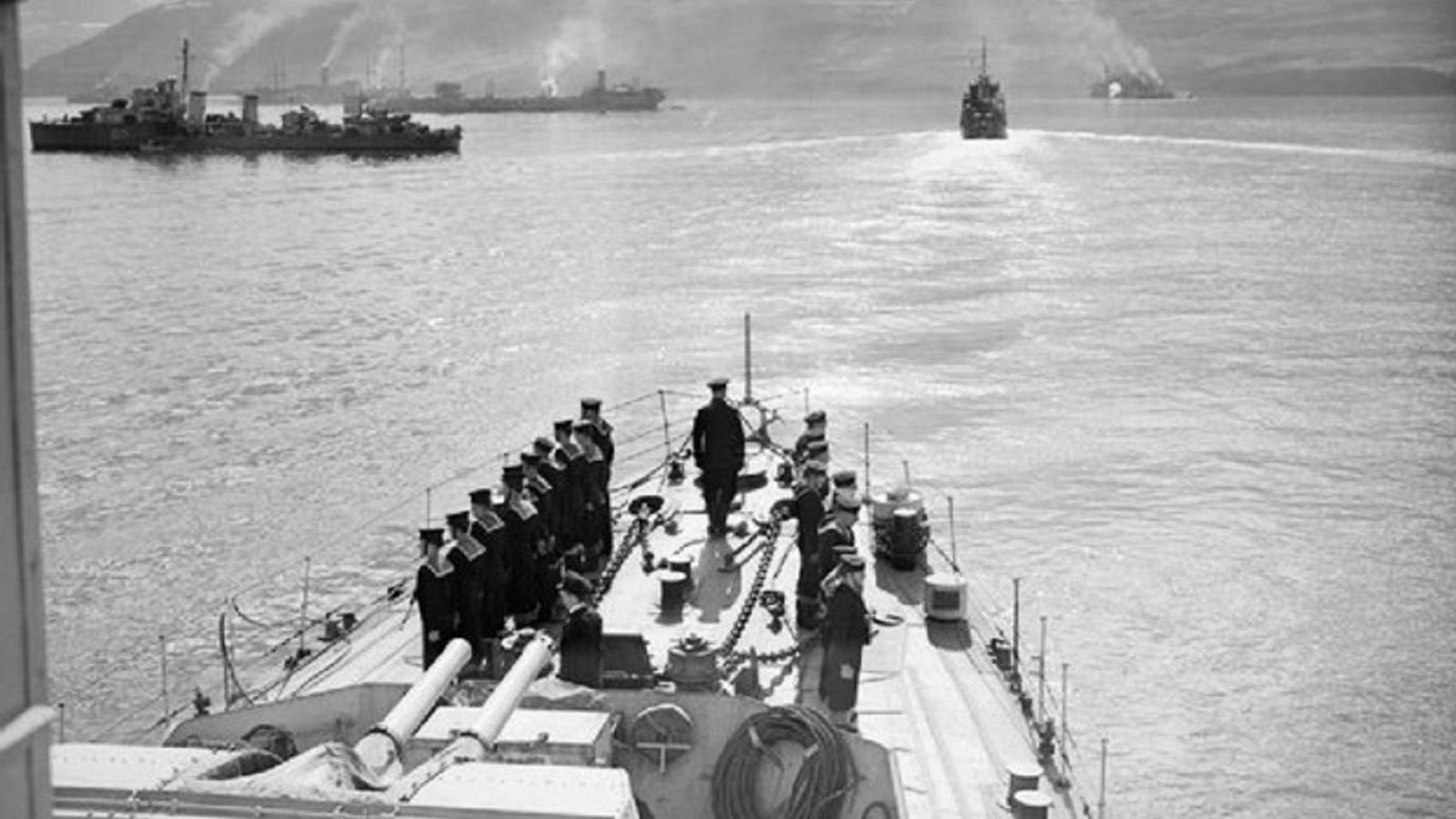Last updated: April 21, 2025
Place
Murmansk Run

Image: IWM (A 8953)
Quick Facts
Location:
World War II Memorial
As you look to your left you will see the inscribed named Murmansk Run. The city of Murmansk, which was an ice-free port, was the northernmost city for the Allies to deliver Lend-Lease aid to the Soviet Union. This meant that the journey was a difficult one at best.
The Soviet Union came to heavily rely on Lend-Lease aid, particularly after the German invasion on June 22, 1941, which marked the beginning of Operation Barbarossa. The first Lend Lease run to the Soviet Union was in August 1941. Murmansk Run was a series of convoy runs to supply the Soviet Union.
After Germany declared war on the United States on December 11, 1941, the U.S. Navy and Merchant Marine became a vital lifeline, tasked with protecting convoys carrying supplies from the United States to the Soviet Union. Sailors from these two branches of the U.S. Armed Forces had to navigate treacherous and demanding routes, playing a critical role in sustaining the Soviet war effort.
Some of the difficulties these sailors faced included the icy, frigid waters of the Atlantic Ocean, relentless attacks from German U-boats, and the threat of the Luftwaffe (German Air Force) operating out of Norway—all while trying to successfully protect the convoys.
In July 1942 a particular convoy, PQ-17, was facing these dangers while on the route to the city of Murmansk. By the time they finally reached their destination, only 11 of 35 ships arrived in Murmansk. Winston Churchill said later, “PQ17 was one of the most melancholy episodes of the war.”
The Soviet Union came to heavily rely on Lend-Lease aid, particularly after the German invasion on June 22, 1941, which marked the beginning of Operation Barbarossa. The first Lend Lease run to the Soviet Union was in August 1941. Murmansk Run was a series of convoy runs to supply the Soviet Union.
After Germany declared war on the United States on December 11, 1941, the U.S. Navy and Merchant Marine became a vital lifeline, tasked with protecting convoys carrying supplies from the United States to the Soviet Union. Sailors from these two branches of the U.S. Armed Forces had to navigate treacherous and demanding routes, playing a critical role in sustaining the Soviet war effort.
Some of the difficulties these sailors faced included the icy, frigid waters of the Atlantic Ocean, relentless attacks from German U-boats, and the threat of the Luftwaffe (German Air Force) operating out of Norway—all while trying to successfully protect the convoys.
In July 1942 a particular convoy, PQ-17, was facing these dangers while on the route to the city of Murmansk. By the time they finally reached their destination, only 11 of 35 ships arrived in Murmansk. Winston Churchill said later, “PQ17 was one of the most melancholy episodes of the war.”
